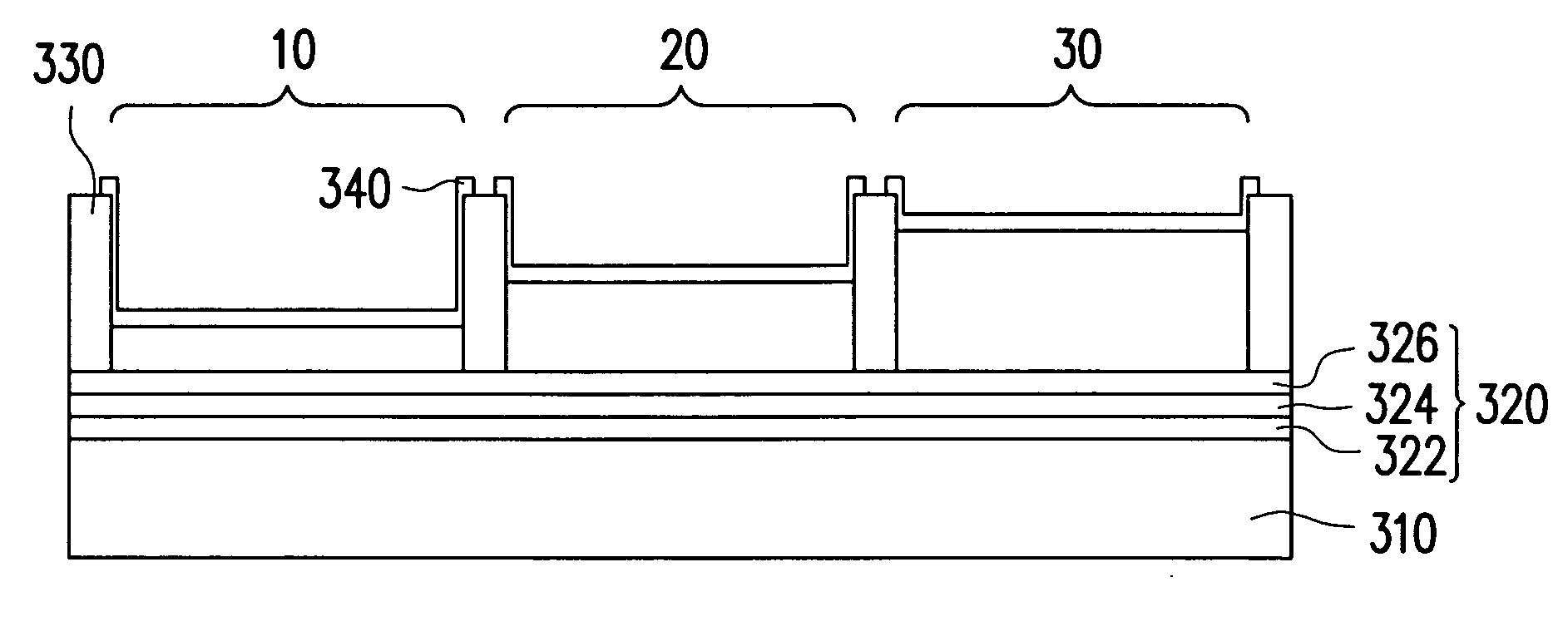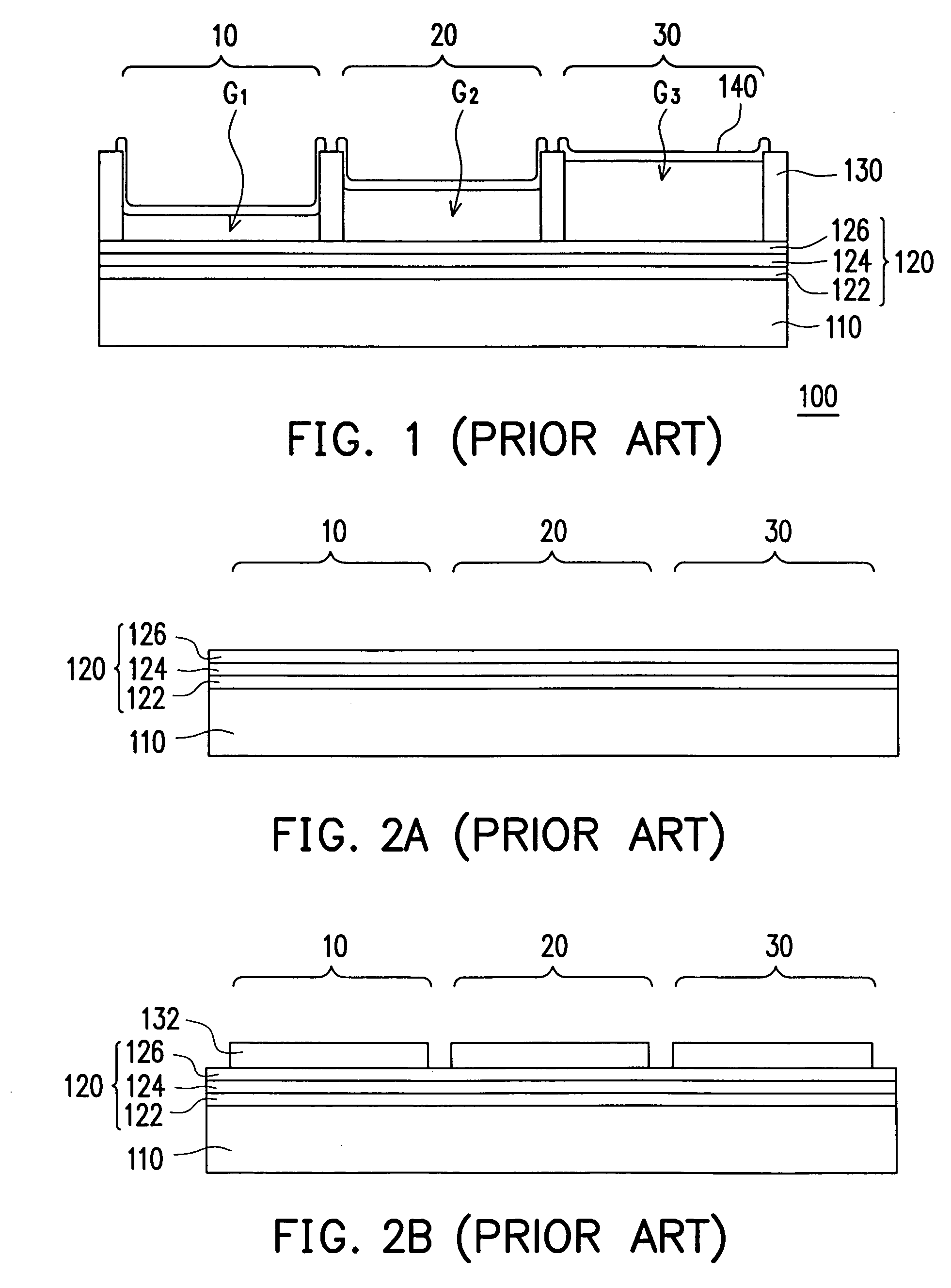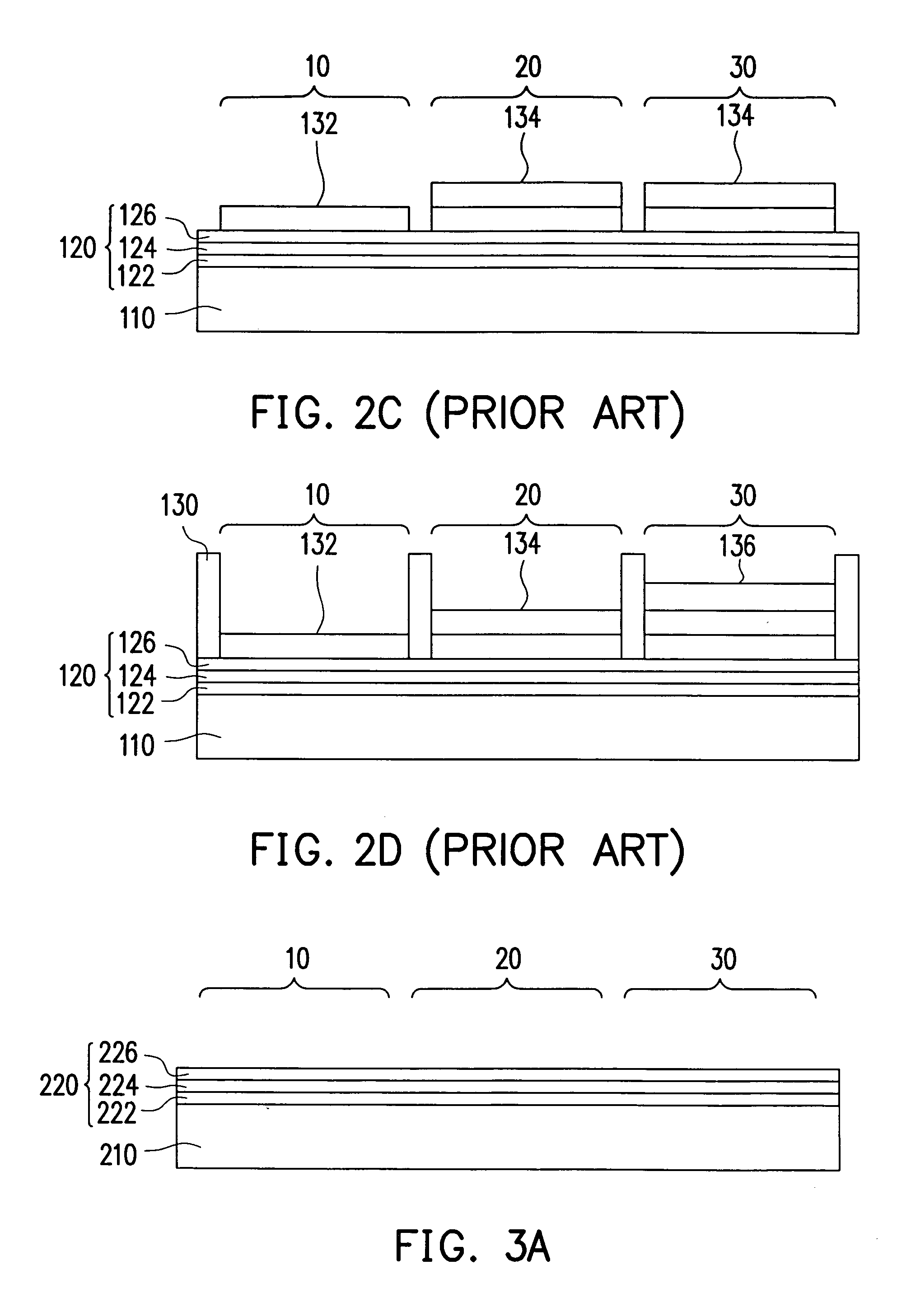Method of manufacturing optical interferance color display
a color display and optical interference technology, applied in the direction of electrical appliances, semiconductor devices, instruments, etc., can solve the problems of poor utilization of light sources, time is not fast, and the sacrificial layers are damaged, so as to improve the optical performance of the optical interference color display, prevent the sacrificial layers from being damaged, and improve the air gap
- Summary
- Abstract
- Description
- Claims
- Application Information
AI Technical Summary
Benefits of technology
Problems solved by technology
Method used
Image
Examples
first embodiment
[0048]FIGS. 3A-3F are cross sectional views showing progress of a method of fabricating an optical interference color display according to the first embodiment of the present invention. Referring to FIG. 3A, a transparent substrate 210 is provided. Its material can be, for example, glass or plastic. A first electrode structure 220 is then formed over the transparent substrate 210.
[0049] The method of forming the first electrode structure 220 can be, for example, a physical vapor deposition (PVD) process or other suitable processes, to deposit indium tin oxide (ITO) over the transparent substrate 210. The ITO layer is then patterned by a photolithographic process and an etching process to form a plurality of first transparent electrodes 222. An absorption layer 224 is then deposited over the first electrodes 222 and partial area of the substrate 210 where no first electrodes 222 are formed. In one embodiment of the present invention, the material of the absorption layer 224 can be, ...
second embodiment
[0060]FIGS. 4A-4F are cross sectional views showing progress of a method of fabricating an optical interference color display according to the second embodiment of the present invention. Referring to FIG. 4A, the steps are similar to those shown in FIG. 3A. A first electrode structure 220 is formed and the first area 10, the second area 20 and the third area 30 are defined.
[0061] Referring to FIG. 4B, a first sacrificial layer 332 is entirely deposited. The material of the first sacrificial layer 332 can be selected from a group consisting of MoCr, Cr, polysilicon, amorphous silicon and N-type amorphous silicon, for example. Then, a photolithographic process and an etching process are performed to remove the first sacrificial layer 332 outside the first area 10 to form the first sacrificial layer 332 with designate patterning.
[0062] Referring to FIG. 4C, a second sacrificial layer 334 is entirely deposited. The material of the second sacrificial layer 334 has an etching rate at le...
PUM
 Login to View More
Login to View More Abstract
Description
Claims
Application Information
 Login to View More
Login to View More - R&D
- Intellectual Property
- Life Sciences
- Materials
- Tech Scout
- Unparalleled Data Quality
- Higher Quality Content
- 60% Fewer Hallucinations
Browse by: Latest US Patents, China's latest patents, Technical Efficacy Thesaurus, Application Domain, Technology Topic, Popular Technical Reports.
© 2025 PatSnap. All rights reserved.Legal|Privacy policy|Modern Slavery Act Transparency Statement|Sitemap|About US| Contact US: help@patsnap.com



